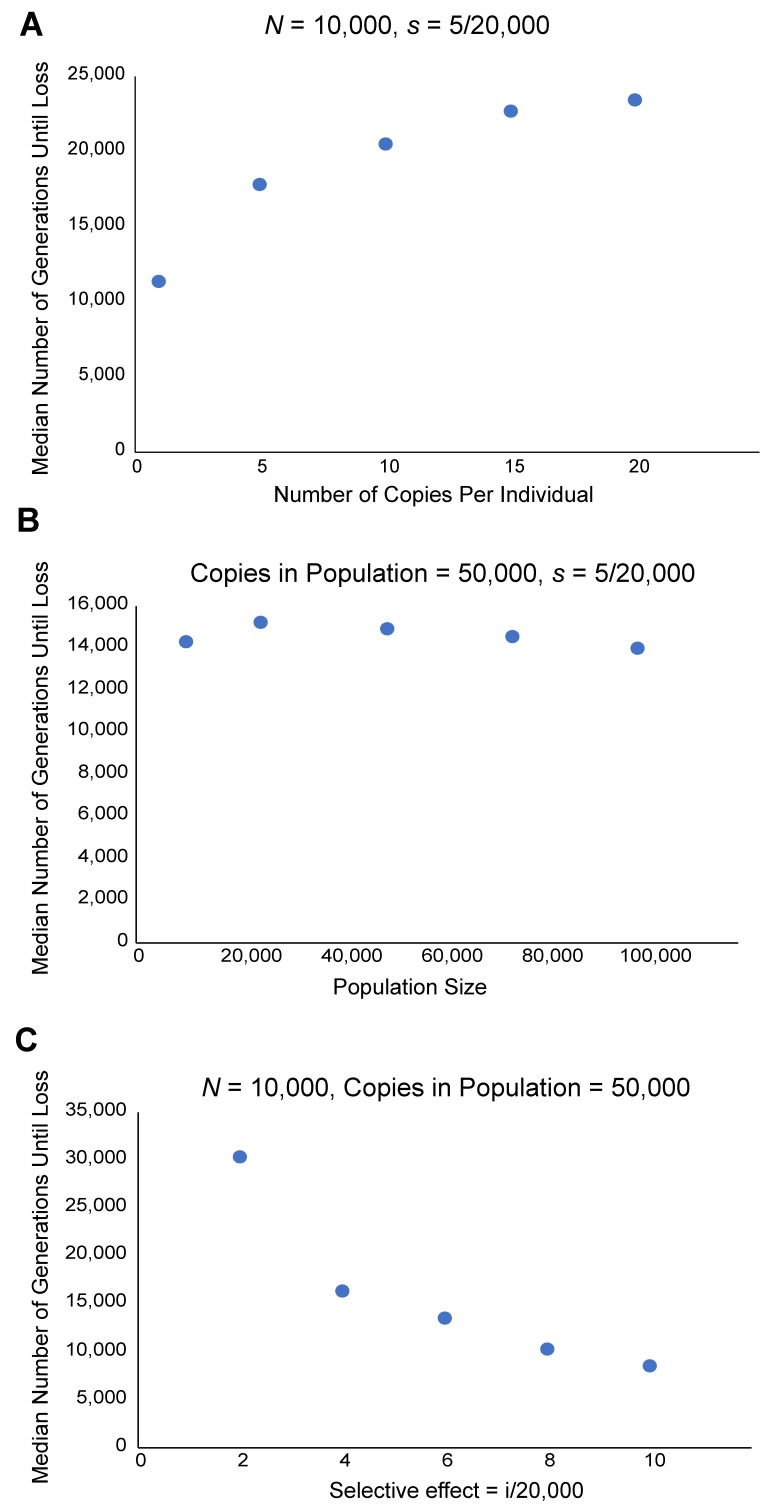Figure 1.
Dynamics of stochastic loss. N is the diploid population size and s is the selection coefficient acting against single insertions. All simulations were performed by simple binomial sampling of insertion alleles starting at frequency of 1/2N. Sampling was iterated according to frequency in the population for a given number of copies. This procedure implicitly assumes there is no linkage. In addition, by assuming no actual transposition or degradation specifically, it is suitable to a scenario where the rate of transposition is equal to the rate of mutation to a non-functional state. Selection was simulated by adjusting the probability of sampling according to the selection coefficient. (A) Fixed population size and negative selection coefficient. The time until loss increases with per individual copy number. Note that the rate of increase declines. (B) A fixed number of copies in the population, distributed among individuals of different population sizes. The time until loss is not affected by population size. (C) An increasing selection coefficient, as expected, decreases the time until loss.

